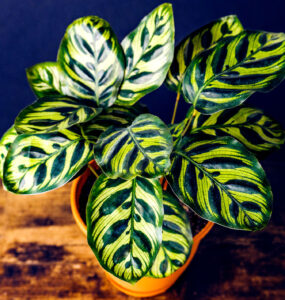
The Fake News on Earwigs
By Rob Sproule
Earwigs & Fake News
Spotting Them
Controlling Them
Protecting Your Home
They look like tiny prehistoric nightmares with a stereotype to match. But as long as you can keep them outside, they aren’t as hard to control as people think. And you’ll never guess where the name came from!
” ‘Tis vain to talk of hopes and fears,
And hope the least reply to win,
From any maid that stops her ears
In dread of earwigs creeping in!”
– Thomas Hood, early 19th century
Earwigs & Fake News:
Ever wonder why Earwigs are called “earwigs?” It’s a rather horrifying story, and a fascinating history of some enduring fake news. If you consulted any encyclopedia or textbook written before the 20th century, it was conventional wisdom that earwigs would get inside you house, crawl into your ear, and lay its eggs in your brain. The victim (you) would go slowly insane when the eggs hatched and ate your brain for sustenance. Of course this isn’t true, although the myth still lingers. Despite their hideous pincers and scary black bodies, they neither sting nor bite. If you pick them up and squeeze them, they will defend themselves (wouldn’t you?)
Spotting Them:
This is the easy part. They’re about 20mm long and have giants pincers on their butt. Usually dark brown, they can also be yellow, reddish, or black as well. You’ll see their damage before you see them. During the day, like cuddle up under leaf litter, bark, or stones.
Their damage looks like a slug attack, with big holes taken out of the fleshy bits of leaves until only a stemmy skeleton remains. Unlike slugs, however, they don’t leave slime trails that glisten as they harden.
Earwigs chow down on a host of different plants. Last Fall my heart sank as I shucked my home-grown corn to find the cobs decimated and happy, fat earwigs chowing down. Here’s a partial list:
“¢ Clovers
“¢ Dahlias
“¢ Zinnias
“¢ Roses
“¢ Lettuce
“¢ Corn
“¢ Cauliflower
“¢ Potatoes
“¢ Beans
“¢ Strawberries
“¢ Grapes
Controlling Them:
Earwigs don’t wander far from their moist, dark, cool daytime sanctuary. If you see the damage, check the vicinity for piles of leaf litter, wood mulch, or anywhere else they can hide. They’re probably living within a few feet of their dinner. You can make an earwig trap by rolling up a newspaper (it helps to dampen it), and place it next to the plants they’re munching. They’re crawl into the cool soft dampness. In the morning, pick up the newspaper and dump the sleepy squatters into a bucket. Repeat every night as needed.
You can encourage natural predators into the yard. Ladybugs and birds love to chow down on earwigs.
Don’t spray chemicals unless a very last resort. If you do, you’ll need to spray the earwig itself in direct contact (and at that point, you might as well just step on the bugger). The good news is that they’re omnivorous and eat their share of aphids, nematodes, and other garden pests. So it’s not all bad.
Learn more about earwigs, with Alberta’s Best Gardening Blog
Protecting your Home:
We can breath a sigh of relief that they won’t lay eggs in our brains, but we still don’t want them in our homes. They’re sneak in via foundation cracks, open or loose doors, basement windows, etc. Once inside, they’ll make themselves right at home under your sink, in your bathroom, or in your walls. And they can be very hard to evict.
To keep them out, the most important step is to clear piles of litter and debris away from your foundation. They won’t travel far across open, bare ground, and a foot of buffer should do it. This will also deter other opportunistic invaders like sow bugs and mice. Keep your foundation area as dry as possible (again, always a good idea). Clean your gutters and make sure your downspouts extend a few feet away, at least. Close up the cracks with weather stripping and, if you want to make sure, layer sand or gravel against your foundation to keep them out.















